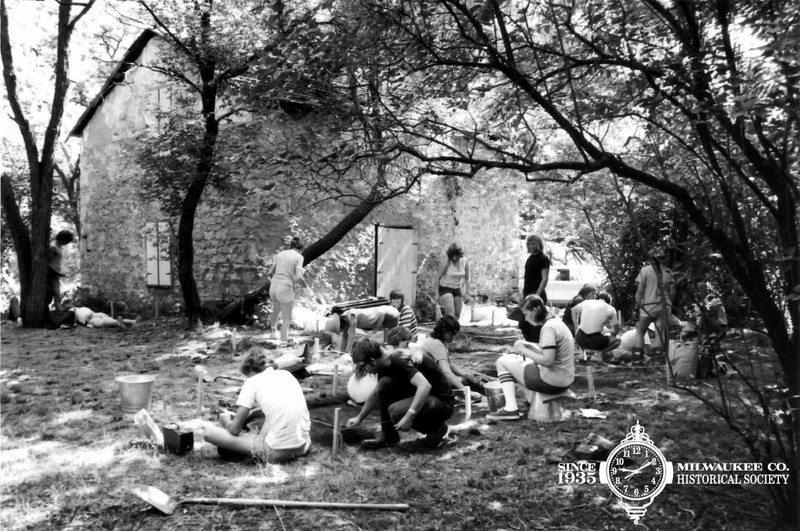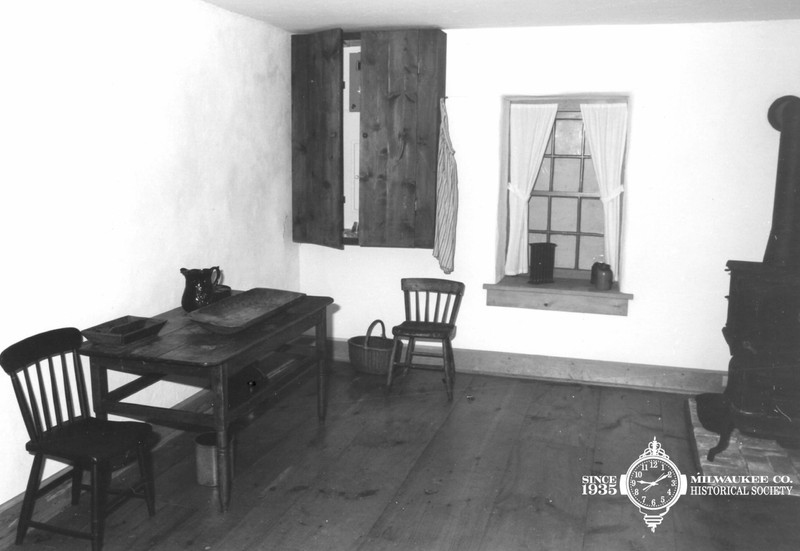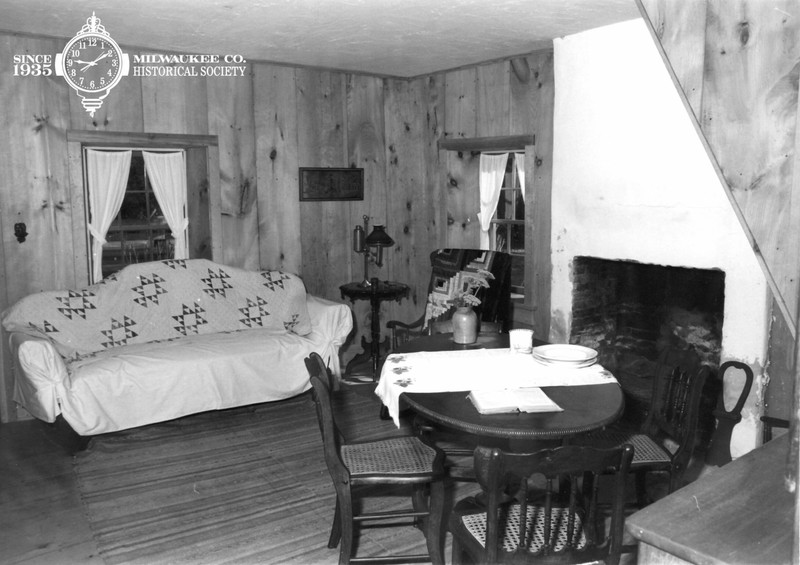Jeremiah Curtin House
Introduction
Text-to-speech Audio
David Curtin, his wife Ellen (Furlong), and infant son Jeremiah were among a group of Irish immigrants who settled in the Greenfield area in1836, before Wisconsin became a state. The family owned two other houses on nearby properties before building this home in 1846. It was the first stone house in the area and was built from limestone quarried from what is today, Trimborn Farm County Park. The property was sold to the Trimborn family in 1866 and remained occupied until the 1920s. The Milwaukee County Historical Society acquired the house in 1952 from the federal government, and it was selected as Milwaukee County’s Bicentennial Project in 1976. Funds raised by various community organizations helped restore the site in the late 1970s.
David and Ellen’s son, Jeremiah Curtin, went on to be a noted American folklorist, linguist, translator, and ethnographer.
Images
The Jeremiah Curtin House around 1890 taken by Alma Curtin on a trip to visit the home. At the time of the photo, the house was owned by the Trimborn family.

Archaeological excavations at Jeremiah Curtin House in the 1970s.

Interior of the Jeremiah Curtin House.


Backstory and Context
Text-to-speech Audio
One of the first stone structures in Milwaukee County, the home is built of native limestone mined at the nearby Trimborn Farm. Limestone in the area is very close to the surface and was easily minable. Several lime quarries and kilns were located in the vicinity.
The Curtin family lived in the home until 1866, when they sold it to the neighboring Trimborn family. The Trimborns used the home for housing quarrymen and farmhands until the 1920s when it was given over to storage.
In the 1930s, the Federal Government began the Greenbelt Towns Program as part of the New Deal. Greendale was one of these towns, funded, planned, and built with New Deal funding. As part of this project, Trimborn Farm and the Jeremiah Curtin House were purchased by the federal government. During the program, workers were housed in the Farm buildings and in 1936 the Furlong and Curtin descendants, the Greendale Resettlement Administration in charge of the Greenbelt Project, and the local chapter of the Daughters of the American Revolution met to discuss restoration of the house. The Greendale Resettlement Administration took on the responsibility. Although it appears some remodeling was done, the project was never completed.
In 1952, the Milwaukee County Historical Society acquired the building with the support of Clement Zablocki, a Wisconsin State Senator from Milwaukee. The Village of Greendale had intended to convert the home to a museum but were never able to fund the project.
The house was named to the National Register of Historic Places in 1972 with help of the Shamrock Club of Wisconsin. The Shamrock Club helped again in 1976 when the house was chosen as a Bicentennial project and funds were made available for its restoration. The Club was instrumental in raising funds for the two-phase project.
The first phase of restoration included stabilizing the building with new windows, doors and roof, floor and restructuring the fireplace and chimney. Archaeological excavations took place to determine the footprint of the original house, which had been altered in the 1930s. The second phase rebuilt the attached kitchen and springhouse using this archaeological information and finished the interior walls. The restored home opened to the public in 1980.
Jeremiah Curtin
Born in Detroit, Jeremiah Curtin was a few months old when his family moved to the Greendale area. He had an interest in languages from a young age, having grown up in an immigrant area hearing Irish, German, and other languages spoken. He first attended college at Carroll College in Waukesha, learning Greek and Latin and was able to begin at Harvard in October 1859.
After graduating in 1863, he worked in law and studied languages in New York for a short time before being appointed by President Lincoln, as Secretary to the United States legation to Russia in 1864. He spent the next eight years in that position at St. Petersburg.
In 1872, he arranged for and joined Russia’s Grand Duke Alexis’ visit to Milwaukee. While on this trip, Curtin met and married Mary Alma Cardell, a Vermont-born teacher and photographer working at a school in Madison.
Alma returned to Russia with Jeremiah, where they tried to establish a timber business in the Crimea. With the outbreak of war between Russia and Turkey in 1877, the Curtins abandoned their plans and returned to the United States. For the next four years, the Curtins lived in the Midwest, where Jeremiah lectured and worked on an encyclopedia for a Chicago firm.
In 1882, Curtin joined the staff of the Smithsonian Institution’s Bureau of Ethnology, where he specialized in collection vocabularies and myths of American Indian tribes. From then until Jeremiah’s death in 1906, the Curtins travelled extensively, collecting folklore from a variety of cultures. In addition, Jeremiah made translations of popular European literature into English.
In this capacity, he is the best- known translator of the works of Nobel Prize-winning Polish author, Henryk Sienkiewicz, whose Quo Vadis? was one of the most popular books in both Europe and the United States at the end of the 19th century.
Cite This Entry
Janean Van Beckum on behalf of Milwaukee County Historical Society and Janean Van Beckum. "Jeremiah Curtin House." Clio: Your Guide to History. August 22, 2024. Accessed April 21, 2025. https://theclio.com/entry/183854
Sources
Portion of unknown newspaper article in the Milwaukee County Historical Collection Mss-1172.
Anderson, Harry H. (July 1977). Historic Sites Report, Trimborn Farm and Jeremiah Curtin House. Milwaukee County Historical Society.
Joslyn, Jay . "Curtian Opens On Curtin." Milwaukee Sentinel (Milwakee) November 27th, 1987. .
Milwaukee County Historical Society, Jerimiah Curtin House Collection.
Milwaukee County Historical Society, Jerimiah Curtin House Collection.
Milwaukee County Historical Society, Jerimiah Curtin House Collection.

